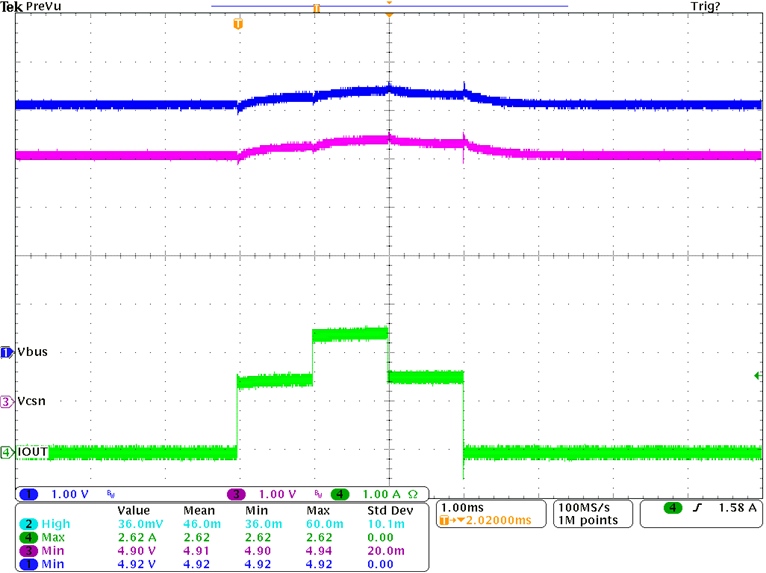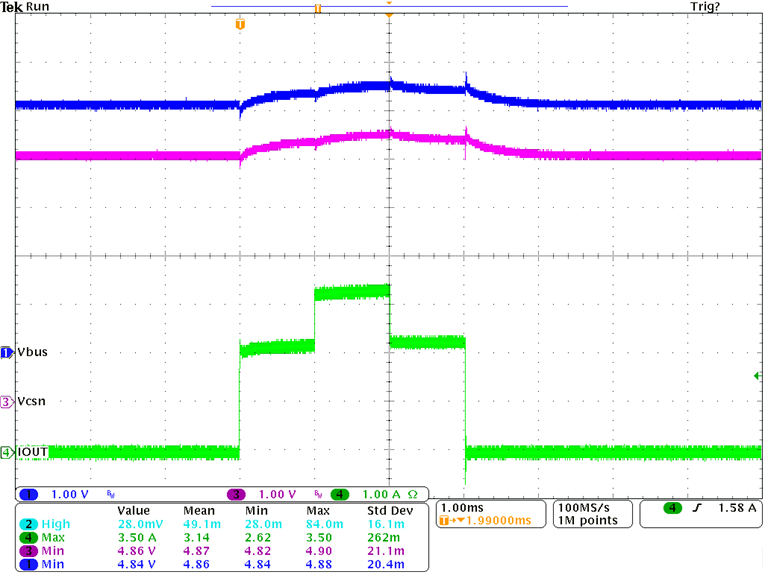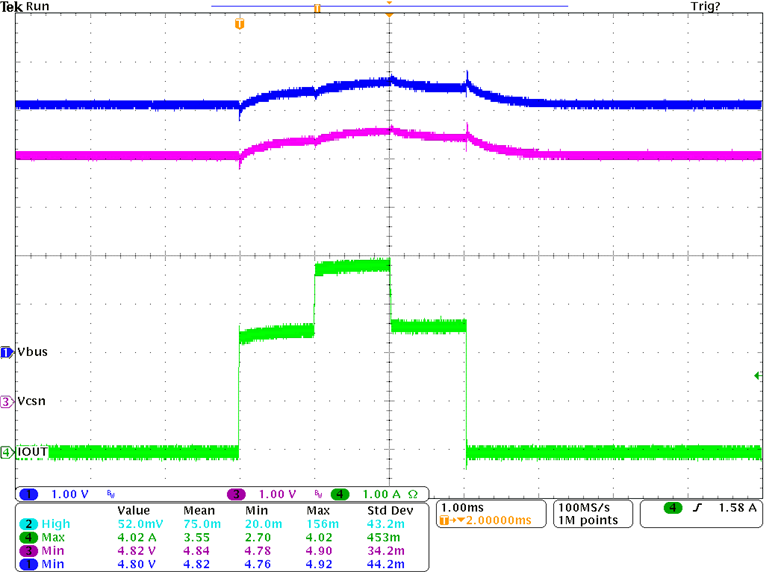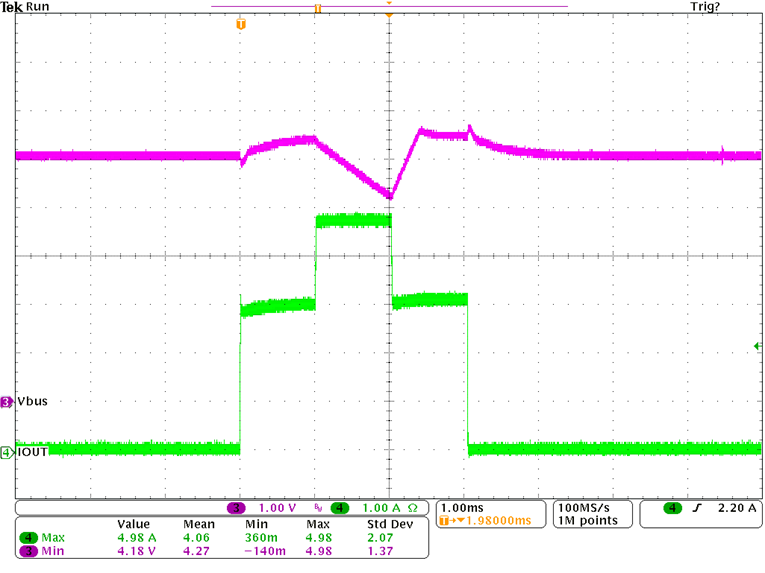SLVAEQ2 April 2020 TPS2549-Q1 , TPS254900-Q1 , TPS254900A-Q1 , TPS2556-Q1 , TPS2557-Q1 , TPS2559-Q1 , TPS25830-Q1 , TPS25831-Q1 , TPS25832-Q1 , TPS25833-Q1 , TPS25840-Q1 , TPS25842-Q1
-
How to Pass MFi Overcurrent Protection Test With USB Charger and Switch Device
- Trademarks
- 1 The Instruction of MFi OCP Requirement
- 2 Test Standard and Requirements
- 3
The Solution to Pass MFi OCP Test
- 3.1 Solution 1: Increasing Current Limit Point Higher Than 1.6*Ia
- 3.2
Solution 2: Paralleling RC With Rlimit to Delay the Current Limit Response
- 3.2.1 For the 1.5A USB Port With External FET
- 3.2.2 For the 1.5A Port Without External FET
- 3.2.3 For 2.1A USB Port With External FET
- 3.2.4 For 2.1A USB Port Without External FET
- 3.2.5 For 2.4A USB Port With External FET
- 3.2.6 For 2.4A USB Port Without External FET
- 3.2.7 For 3A USB Port With External FET
- 3.2.8 For 3A USB Port Without FET
- 4 Summary
- 5 References
3.1 Solution 1: Increasing Current Limit Point Higher Than 1.6*Ia
This solution is easy to understand. When the current limit point is higher than 1.6*Ia, the IC will not do any response to the OCP test. What you need to consider is whether or not the IC can support 1.6*Ia at a continuous current. TPS2583x/4x-Q1 internal FET has a peak current limit. If 10 µH inductors are used as EVM, it can support 4.5A maximum continuous output current. So, the solution can be summarized as shown in Table 4.
Table 4. Set Higher Current Limit
| Ia of USB Port | Methods (set current limit .1.6*Ia) |
|---|---|
| 1.5A | Set current limit > 2.4A |
| 2.1A | Set current limit >3.36A |
| 2.4A | Set current limit > 3.84A |
| 3A | Set current limit > 4.8A and add 330 µF cap on CSP |
Below are the test results of the four cases listed in Table 4.
- For the 1.5A USB port, set the current limit to 2.45A with external FET, the Vbus does not have any drop under the certification load.
- For the 2.1A USB port, set the current limit to 3.45A with external FET. The Vbus does not have any drop under the certification load.
- For the 2.4A USB port, set the current limit to 3.96A with external FET. The Vbus does not have any drop under the certification load.
- For the 3A USB port, set the current limit to 5A with external FET, and add 330 µF cap on CSP. The Vbus drops to 4.18 V under the certification load. For the 3A port, 1.6*Ia is 4.8A. It is higher than 4.5A (the maximum continuous output current of TPS2583x/4x-Q1). Cap needs to be added to make sure the voltage drop is within the acceptable range during the 1 ms overcurrent.
 Figure 5. Set 2.45A Current Limit for 1.5A Port
Figure 5. Set 2.45A Current Limit for 1.5A Port  Figure 6. Set 3.45A Current Limit for 2.1A Port
Figure 6. Set 3.45A Current Limit for 2.1A Port  Figure 7. Set 3.96A Current Limit for 2.4A Port
Figure 7. Set 3.96A Current Limit for 2.4A Port  Figure 8. Set 5A Current Limit, and Add 330 µf Cap on CSP for 3A Port
Figure 8. Set 5A Current Limit, and Add 330 µf Cap on CSP for 3A Port Overall, increasing the current limit higher than 1.6*Ia is a solution with the least change to the schematic to pass the MFi OCP test. However, it has an obvious limitation that some devices cannot support 1.6*Ia continuous output current. Extra capacitance needs to be added to make up for this limitation. At the same time, some customers do not want to set the current limit so high, even if it does not affect the IC function. They prefer to set a current limiting value similar to Ia, such as 1.2*Ia. Solution 2 is for the application of setting small current limit point.